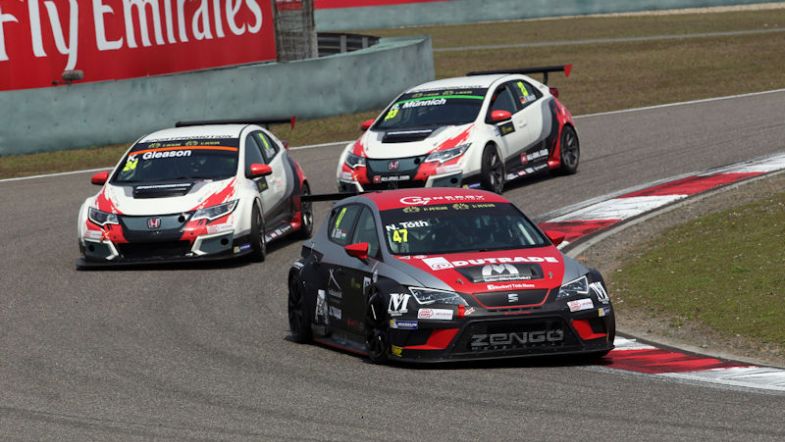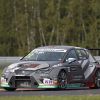FIA to integrate TCR type cars as new TCN-2 class
The FIA World Motor Sport Council is set to ratify the touring car format being used by numerous one-make series, and most notably the various TCR (Touring Car Racer) Series, as the new FIA TCN-2 category later this month, which will introduce a formal homologation process for those cars as well as mandate various safety changes which will come into effect from 2017.
The change will principally affect the FIA European Touring Car Cup as soon as next season, which will see the Single-Make Trophy class, which is currently reserved for the SEAT León Eurocup cars, opened up to other cars which have been built for the TCR Series’, including cars such as the JAS Motorsport developed Honda Civic TCR, the Onyx Race Engineering built Ford Focus ST, as well as the Opel Astra OPC, Subaru WRX STi TCR and Volkswagen Golf TCR allowed to compete from next year.
The FIA will introduce some technical and official changes to cars which are to receive TCN-2 homologation. From 2017, in the interests of safety, the fuel tank will need to be moved and increased lateral protection introduced for the driver. Cars which are to be built in the future for TCR are likely to be built this way by default by the manufacturers following consultation with the FIA, while existing cars will require modification in order to be eligible for TCN-2, but for 2016 the cars will be able compete in their current configuration.
Cars built for TCR will still continue to be eligible for the series, as it is not an FIA championship, via the current TCR technical passport, which is separate from the FIA TCN-2 homologation process.
The FIA change to TCN-2 as the new low-cost national class based on TCR type cars means a change to the original plan announced last December, which was to use Argentinian Turismo Nacional cars as the basis for TCN-2.
The top tier national class which is recognised by the FIA will still remain TCN-1, which is modelled on the current British Touring Car Championship (BTCC) technical regulations.
FIA TC1
Cars used in the FIA World Touring Car Championship – 2014 to present
Super 2000 cars, 1.6 turbo engines, higher engine performance and aerodynamic package
Not exhaustive list, includes:
– Chevrolet RML Cruze TC1
– Citroën C-Elysée WTCC
– Honda Civic WTCC
– Lada Granta WTCC
– Lada Vesta WTCC
FIA TC2T
Cars used in the FIA World Touring Car Championship – 2011 to 2013
Super 2000 cars, 1.6 turbo engines
Not exhaustive list, includes:
– BMW 320 TC
– Chevrolet Cruze 1.6T
– Ford Focus S2000 TC
– Honda Civic WTCC
– Lada Granta WTCC
– SEAT León WTCC
– SUNRED SR León 1.6T
– Volvo C30 DRIVe
FIA TC2
Cars used in the FIA World Touring Car Championship – 2005 to 2010
Super 2000 cars, 2.0 normally aspirated engines
Not exhaustive list, includes:
– Alfa Romeo 156 S2000
– BMW 320i E46
– BMW 320si E90
– Chevrolet Cruze LT
– Chevrolet Lacetti
– Ford Focus
– Honda Accord Euro-R
– Lada 110
– Lada Priora
– Peugeot 407
– SEAT Toledo
– SEAT León TFSI
– SEAT León TDI
– Volvo C30
FIA TCN-1
Based on technical blueprint from the British Touring Car Championship
Formerly known as “Next Generation Touring Cars”, 2.0 litre turbo cars, common subframe and electronics, balanced engine performance
FIA TCN-2
Based on SEAT León Cup Racer and subsequently Touring Car Racer (TCR) format
Production-based touring cars, 2.0 litre turbocharged engines
Not exhaustive list, includes:
– Ford Focus ST
– Honda Civic TCR
– Opel Astra OPC
– SEAT León Cup Racer
– Subaru WRX STi TCR
– Volkswagen Golf TCR










